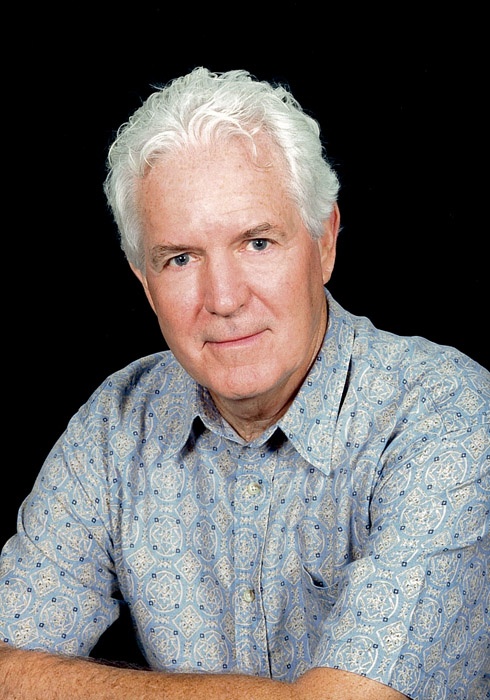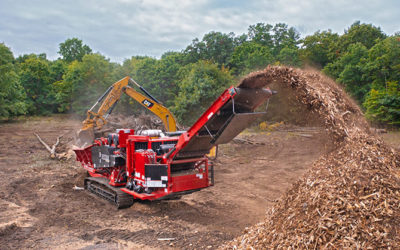Despite Irritating Tradeoffs, High-Tech Iron Is Here To Stay
Article by DK Knight Executive Editor/Co-Publisher, Timber Harvesting February 2018
 Timber Harvesting’s 2018 National Logging Equipment Survey, completed last November, was an interesting project that generated lots of information about loggers’ equipment satisfaction level, buying practices, attitudes, expectations, apprehensions, and frustrations. Special thanks to the 360 logging business owners who completed the study.
Timber Harvesting’s 2018 National Logging Equipment Survey, completed last November, was an interesting project that generated lots of information about loggers’ equipment satisfaction level, buying practices, attitudes, expectations, apprehensions, and frustrations. Special thanks to the 360 logging business owners who completed the study.
Over time, and particularly since the 21st century arrived, logging equipment has become larger, heavier, quieter, easier on fuel, more powerful, more productive, more comfortable, more high-tech, and much more expensive. Overall, loggers are satisfied with their current equipment inventory, but many who completed the survey are anything but comfortable with new equipment complexity and its vexing fallout.
Telling Paradox
One paradox confirmed by the survey is that even though today’s machines are built to last for 15,000 to 20,000 hours or more, there is a growing tendency among many upper-tier loggers to buy an extended warranty and rotate their harder working machines at or near the end of the warranty period, typically at less than 7,000 hours. The primary reasons are that some equipment is so complicated and sensitive, only a well-trained tech, if available, can work on it, and when post-warranty repairs are necessary, the costs can be exorbitant.
This influx of machines is a negative for owners and dealers, as the market for them is weak and is suppressing values. A few dealers with bulging used equipment inventories don’t even take trade-ins, I am told. The ranks of those loggers who favor used machines are thinner, and offshore markets for low emissions machines don’t exist, causing anxiety to build among many equipment players.
Manufacturers like to use phrases such as “better engineered,” “longer lasting” and “more reliable” to describe their products. Several survey participants challenged the reliability assertion, likely hinging their opinions on bad experiences they have had, and possibly continue to have, with issues linked to low emissions engine intricacies, electronic codes and such, and the limited ability of dealer service techs to quickly and effectively diagnose and correct problems.
Wrote one logger: “Reliability is a double-edged sword. Mechanically, machines are more reliable, but electrical faults make them inoperable.”
Another: “I’d rather have a machine built to work than a home office on wheels.”
Fewer Choices
Again, over time, mergers and financial meltdowns have reduced the number of manufacturers and new equipment prices have soared, adding to operating expense and forcing up certain used equipment prices. Also, the number of equipment dealers has declined, and they are larger and better capitalized, but this doesn’t necessarily mean they are consistently and efficiently meeting customer needs. Many loggers called out dealers about the lofty prices they charge for parts, which they say are often not in stock, and service, which at times is inefficient and unreliable.
One related comment: “A lot of the time their mechanics are not experienced and we feel they just throw parts at machines, hoping for a fix.”
No Going Back
Dealer techs likely will become better at diagnosing and fixing problems, but manufacturers are not likely to retreat from their march along the high-tech trail. Like it or not, technology is accelerating rapidly and our society and workplaces are adopting it rapidly.
As for logging equipment, late last year I heard John Deere engineers tell a logging group we are now in what they called the bigger/stronger/faster technological phase, but we will soon be in the easier/smarter/precise stage, or what will be known as the operator assistance era. They said operator productivity can vary by as much as 40% and that advancing technology can effectively close this gap as manufacturers edge ever closer to the autonomous (driverless) machine age.
Size Does Matter
The ‘bigger is better’ equipment conviction continues to echo throughout the logging community, even though most timber harvested today is smaller than it was when Ronald Reagan occupied The White House. The largest 4-wheel grapple skidders made by Cat, Deere and Tigercat are almost 12 ft. wide—even wider when fitted with duals. Deere’s 948L and Tigercat’s 632E each weigh almost 50,000 lbs. Tigercat makes a 635G 6-wheel bogie skidder that weighs 54,500 lbs. and is 31 ft. long. TimberPro’s TF840C clambunk skidder is a 30-ton beast. Many track feller-bunchers weigh 40 tons; some push or exceed 50. In the CTL world, even forwarders are bigger than ever, with some models weighing 25 to 30 tons.
Several survey respondents, predominately loggers working in hardwood thinning applications and/or in smaller tracts, called for smaller and lighter feller-bunchers and skidders. The smallest skidder made in North America today is the Tigercat 602 cable unit. But ‘small’ is relative. With 168 HP, it weighs 28,375 lbs., is a little over 22 ft. long and almost 9 ft. wide. The smallest wheel feller-buncher available, the 130 HP tri-wheel DF 703 Phoenix, weighs about 20,000 lbs. without a head.
A wide choice of smaller machines probably is not on the horizon. From a manufacturing standpoint, I understand that the costs to make a smaller machine are disproportionate to the costs to build a larger one. Put another way, margins are generally higher on larger machines.
Be this as it may, the primary driver of larger machines is their superior productivity in smaller timber. One operator in a bigger machine achieves greater output. It’s that simple.
As one logger commented: “It’s all about cost per ton and how to get that down. Bigger, more productive equipment makes a real difference.”
Latest News
Bureau of Land Management Withdraws Timber Sale Project
Bureau of Land Management Withdraws Timber Sale ProjectThe Bureau of Land Management (BLM) has withdrawn a timber project east of Eugene, Ore. after three environmental groups filed a lawsuit last...
New From Bandit: HM6420 Hammermill Grinder
This highly productive 40 in. capacity grinder is designed and manufactured to be an alternative solution for those grinding applications that may contain contaminants. A Caterpillar C32, 1,200 HP engine provides ample torque and horsepower for optimal machine performance and productivity. The heart of the HM6420 is a 50 in. x 66 in. wide hammermill. The heavy-duty mill features a 1.75 in. drum skin custom formed from rolled plate. The mill is supported by a 7 in. main shaft constructed of alloy steel that has been ultrasonic tested…
Air Burners Collaborates To Introduce BioCharger
Air Burners, a manufacturer of air curtain burner systems, has collaborated with Rolls-Royce and Volvo Construction Equipment to develop and test the BioCharger—a portable machine that turns biomass waste into energy. The BioCharger combines three innovative steps to provide off-grid power from vegetative waste management. First, it eliminates vegetative waste using air curtain technology to minimize the harmful particulate matter entering the atmosphere…
WANT MORE CONTENT?
Spanning seven decades since its inception in 1952, Timber Harvesting highlights innovative and successful logging operations across the U.S. and around the world. Timber Harvesting also emphasizes new technology and provides the best marketing vehicle for the industry’s suppliers to reach the largest number of loggers in North America and beyond.
Call Us: 800.669.5613



